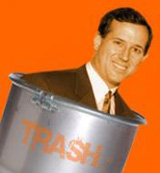Hitler in Color
This link in The Guardian announces to some population of The Interested the release of a new DVD documentary entitled Hitler in Colour. Apparently this documentary unearths lost footage of Hitler at Nuremburg among other pieces of film always assumed not extant or possibly never extant.
The prospect of seeing Hitler in full spectrum is horrifying for most. The recent film Der Untergang (Downfall) about Hitler's final days continues to cause controversy and discourse over the necessary shift in our historical understanding of Adolf. Der Untergang explores the final moments of Hiter's decline and grants Hitler a personality aspect that many refuse to accept: a strange humanistic side. There are moments of thought and even tenderness in the film, and it is this humanistic quality that has created a maelstrom of activity against the film.
We can't accept Hitler as a man: as long as we refuse to allow the fact of humanity in the great evils that occured under Hitler's watch, we'll continue to mythologize the events and the courses of evil that have occured. We'll continue to discount the quality of culture which led to the rise of the Reich in Germany: the overwhelming poverty; the vacuous political structure of the Weimar; the ambiguous international presence after the Great War; the rise of European Fascism across the board which, if not itself enabling, gave passive assistance to the cultural feeling of unease and fear in Germany.
And so there's a great irony here. As long as we engage in this perpetration of historical mythological creation we relinquish the need to deal with the historical tragedy in meaningful ways. We can't both say that the Holocaust was the greatest exhibit of man-on-man tragedy and then refuse consistently at every contemporary juncture of Genocide (Rwanda, current Sudan) to intercede. We have this cultural sense that Hitler was Evil Beyond Human and therefore, even when the same calculated evil persists to neglect our duties to combat it. It is foolish and tragic.
Der Untergang is a fictionalized retelling of the memories of one of Hitler's final secretaries, Traudl Junge, who has her own fascinating documentary film titled Blind Spot in English. Blind Spot is fascinating cinema: like McNamara in Fog of War, Junge, 81, is interviewed about her personal relationship to Hitler the man about why she followed the Nazi line in disbelief of moral wrong, and how her perspective has changed significanlty over the years. She talks about youth, idealism, and Hitler's human side, but she also talks about the stunning cultural changes in Germany and Europe at the time: people looking for answers to their depressions in violent and self-prescribed means. One of the most fascinating scenes has Junge watching her interview from days before on her own television in her home, and remarking "How naive I seem. How naive I was," with true sadness in her aged face. She died shortly after the film was released in the US in 2003.
All of this allows Hitler in Colour the chance for us to examine this man as the driving part of an evil machine, and yet, still just a man. We'll be able to see for the first time the tone of flesh on his cheeks, the dynamic and horrifying red banners dropped from the vertical of the ceiling to the floor, the throngs of seemingly madpeople cheering. We'll see the glint in his eye as though it were more a family film.
I remember watching my grandfather on a family video, shot on an 8mm family camera in the early 50s. He was walking in a full suit down a road in a small town, grinning, with a young-mans gait. I felt for the first time that my grandfather, like me, had a youth. I felt connected to him through the moving picture, I felt like he and I were the same: walking down the same street in some unknown town hoping that tomorrow has the same bright sun as today.
------
Topics I want to think about related to this:
------
For other interesting revivals of color film and imagery, check out this link to some WW1 photographs shot on the Lumiere brothers' very early color photography plates. Fascinating stuff. Amazing how much a fuller spectrum changes everything.
The prospect of seeing Hitler in full spectrum is horrifying for most. The recent film Der Untergang (Downfall) about Hitler's final days continues to cause controversy and discourse over the necessary shift in our historical understanding of Adolf. Der Untergang explores the final moments of Hiter's decline and grants Hitler a personality aspect that many refuse to accept: a strange humanistic side. There are moments of thought and even tenderness in the film, and it is this humanistic quality that has created a maelstrom of activity against the film.
We can't accept Hitler as a man: as long as we refuse to allow the fact of humanity in the great evils that occured under Hitler's watch, we'll continue to mythologize the events and the courses of evil that have occured. We'll continue to discount the quality of culture which led to the rise of the Reich in Germany: the overwhelming poverty; the vacuous political structure of the Weimar; the ambiguous international presence after the Great War; the rise of European Fascism across the board which, if not itself enabling, gave passive assistance to the cultural feeling of unease and fear in Germany.
And so there's a great irony here. As long as we engage in this perpetration of historical mythological creation we relinquish the need to deal with the historical tragedy in meaningful ways. We can't both say that the Holocaust was the greatest exhibit of man-on-man tragedy and then refuse consistently at every contemporary juncture of Genocide (Rwanda, current Sudan) to intercede. We have this cultural sense that Hitler was Evil Beyond Human and therefore, even when the same calculated evil persists to neglect our duties to combat it. It is foolish and tragic.
Der Untergang is a fictionalized retelling of the memories of one of Hitler's final secretaries, Traudl Junge, who has her own fascinating documentary film titled Blind Spot in English. Blind Spot is fascinating cinema: like McNamara in Fog of War, Junge, 81, is interviewed about her personal relationship to Hitler the man about why she followed the Nazi line in disbelief of moral wrong, and how her perspective has changed significanlty over the years. She talks about youth, idealism, and Hitler's human side, but she also talks about the stunning cultural changes in Germany and Europe at the time: people looking for answers to their depressions in violent and self-prescribed means. One of the most fascinating scenes has Junge watching her interview from days before on her own television in her home, and remarking "How naive I seem. How naive I was," with true sadness in her aged face. She died shortly after the film was released in the US in 2003.
All of this allows Hitler in Colour the chance for us to examine this man as the driving part of an evil machine, and yet, still just a man. We'll be able to see for the first time the tone of flesh on his cheeks, the dynamic and horrifying red banners dropped from the vertical of the ceiling to the floor, the throngs of seemingly madpeople cheering. We'll see the glint in his eye as though it were more a family film.
I remember watching my grandfather on a family video, shot on an 8mm family camera in the early 50s. He was walking in a full suit down a road in a small town, grinning, with a young-mans gait. I felt for the first time that my grandfather, like me, had a youth. I felt connected to him through the moving picture, I felt like he and I were the same: walking down the same street in some unknown town hoping that tomorrow has the same bright sun as today.
------
Topics I want to think about related to this:
- Inter-continental cultural shift in ideology
- Color as a meaningful medium of memory
- Mythologizing world history and the loss of understanding
------
For other interesting revivals of color film and imagery, check out this link to some WW1 photographs shot on the Lumiere brothers' very early color photography plates. Fascinating stuff. Amazing how much a fuller spectrum changes everything.






0 Comments:
Post a Comment
<< Home